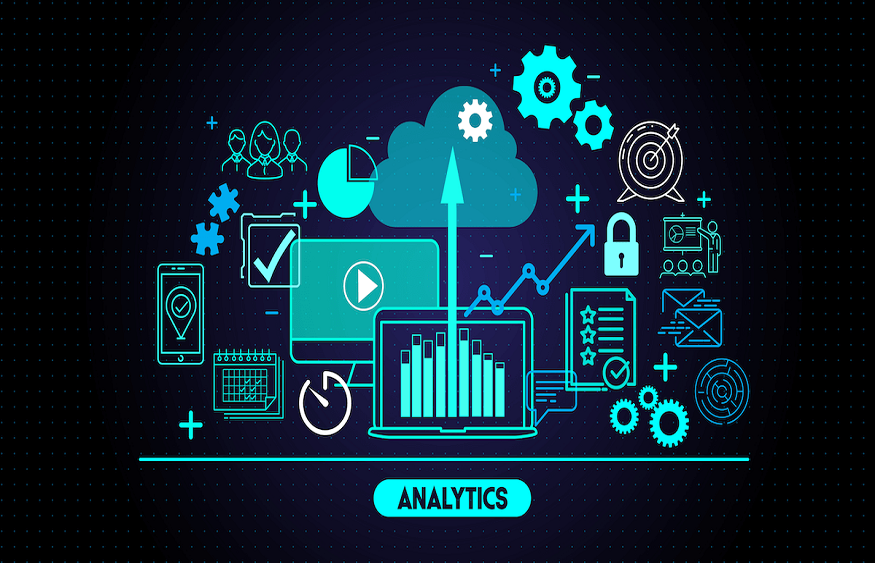The utilization of augmented analytics software has fundamentally transformed how companies obtain valuable information from data, providing numerous advantages that facilitate informed choices and creativity. By utilizing sophisticated algorithms, machine learning, and natural language processing techniques, augmenting analytics software enhances human cognition by automating time-consuming tasks such as data preparation, analysis, and visualization. This potent tool enables organizations to discover concealed patterns, trends, and connections in their data, offering valuable insights that were once difficult to attain. Using augmented analytics software, enterprises can gain a competitive advantage in today’s fast-paced market by making quicker and more precise data-driven decisions.
Enhanced Data Exploration and Visualization
Exploration and visualization of data are greatly facilitated by augmented analytics software, which is one of its main benefits. Using conventional techniques, data analysts frequently dedicate a significant chunk of their time to tidying up and organizing data before initiating the analysis phase. Augmented analytics streamlines these laborious responsibilities, enabling analysts to dedicate their attention to deriving insights and delving deeper into the data. In addition, augmented analytics software offers sophisticated visualization features that facilitate the representation of intricate data more clearly and simply. By doing so, it simplifies the process of comprehending and analyzing information for interested parties, ultimately promoting more effective decision-making
Improved Accuracy and Decision-Making
The software for augmented analytics utilizes AI and machine learning algorithms to provide insights that are more precise and trustworthy. With the automation of data analysis through these tools, the possibility of human errors and impartiality during manual analysis is removed. Sophisticated analytics systems that are augmented can quickly analyze immense amounts of data and uncover patterns and correlations that may be difficult for human analysts to detect initially.
Increased Productivity and Efficiency
The automated functions featured in augmented analytics technology greatly increase productivity and effectiveness within businesses. Smart automation tools enable analysts to devote their time to higher-value activities by freeing them from performing monotonous and time-consuming tasks, such as data preparation and cleansing. Augmented analytics enables users who are not technically skilled to access and analyze data independently without depending on IT or data science teams, resulting in self-service analytics. The widespread availability of data analysis tools not only speeds up the decision-making process but also relieves IT departments of excessive workload, promoting a culture of innovative decision-making based on data across the entire organization.
Faster Time to Insights
In the dynamic world of commerce, time is a critical element. Traditional approaches to analyzing data typically entail a lengthy process of preparing, modeling, and interpreting the data. The process of obtaining insights is simplified by augmented analytics software which automates different stages, leading to quicker results. In a nearly instantaneous manner, analysts can swiftly retrieve and examine data, produce visual representations, and extract valuable conclusions.
Proactive and Predictive Analytics
The augmented analytics software steps beyond the realm of descriptive analysis by facilitating proactive and predictive analytics. By utilizing sophisticated algorithms, these tools can detect patterns and tendencies in past data and utilize them to forecast forthcoming results. This ability is exceedingly beneficial in anticipating demand, forecasting customer actions, streamlining inventory control, and recognizing potential hazards and advantages. The utilization of augmented analytics empowers organizations to adopt a forward-thinking approach to making critical decisions, assisting them in remaining ahead of the constantly-evolving business environment.
Improved Collaboration and Communication
Efficient teamwork and effective exchange of ideas are crucial in promoting creativity and coordinating stakeholders throughout an entire company. The software for augmented analytics promotes teamwork among individuals by furnishing a unified platform to exchange and deliberate over discoveries extracted from data. By utilizing user-friendly graphics and engaging control centers, stakeholders can more efficiently grasp and decipher intricate material, ultimately cultivating superior teamwork and correspondence. Encouraging collaboration among multi-disciplinary groups can enable them to pool their diverse knowledge and skills, effectively addressing intricate challenges and taking well-informed actions.
Scalability and Adaptability
With the expansion of businesses and an increase in data, the ability to scale analytics solutions is of utmost importance. These tools are capable of managing various types of data sources, both organized and unorganized, and can easily adjust to changing business requirements. Augmented analytics software boosts the capability to handle growing needs in data analysis by facilitating the examination of customer data, market trends, and operational metrics, providing much-needed flexibility and scalability.
Cost Savings and ROI
The adoption of augmented analytics software can lead to substantial monetary savings and a profitable ROI. Organizations can cut down on manual labor expenses by implementing automation for data preparation and analysis. By directing their attention towards more valuable duties, analysts can enhance the allocation of resources and overall productivity. Faster and more efficient decision-making can be achieved through the speed and precision provided by augmented analytics systems, ultimately increasing revenue and generating better business outcomes.
Enhanced Customer Experience
The utilization of augmented analytics software is pivotal in improving the overall satisfaction of customers. Enterprises can obtain valuable insights to customize marketing strategies, refine their merchandise selection and optimize customer experiences by evaluating client information, including their purchase records, preferences, and actions. Augmented analytics empowers enterprises to comprehend the requirements of clients, foretell their desires, and offer individualized suggestions that foster allegiance and contentment among customers.
Continuous Improvement and Optimization
The use of augmented analytics software encourages organizations to strive for ongoing enhancement and optimization. By delivering practical intelligence, it empowers enterprises to pinpoint potential areas of enhancement, streamline operations, and boost their productivity. Augmented analytics enables businesses to make iterative enhancements, helping them to be flexible and develop in line with the fluctuating market conditions.
To sum up, the implementation of augmented analytics softwareusa and other developing countries has revolutionized the way organizations operate, unlocking a range of advantages that accelerate their ability to make informed choices based on data and drive progress. This advanced technology expedites the examination of data, improves precision, and boosts efficiency by automating data preparation, analysis, and visualization. Augmented analytics software gives businesses the ability to reveal concealed insights, detect aberrations, and take proactive real-time decisions. By providing self-service analytics features, data analysis is no longer limited to a select few individuals within the organization. This promotes access to valuable insights for users of all levels, thus empowering data democratization. Augmented analytics software empowers businesses in the USA to obtain a favorable position in the market, streamline their procedures, and enhance customer satisfaction, which ultimately yields successful outcomes amidst the current data-driven environment.

